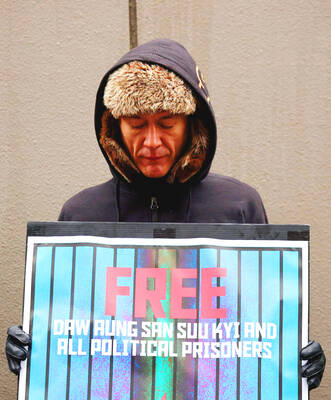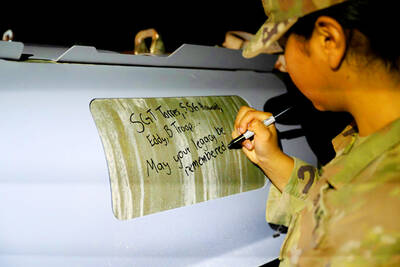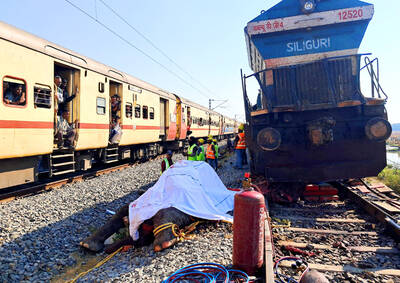The first scientific survey to assess the deadly nature of the conflict in the Sudan's Darfur area has found that death rates there were three to 10 times higher than those normally found in sub-Saharan Africa, highlighting the gravity of the crisis.
Experts say the survey -- a rare study of people fleeing violence -- could be used to hold those behind the killings accountable for their actions.
Between April and June of this year, Dr. Evelyn Depoortee of the Epicenter in Paris, together with researchers from the French arm of the relief organization Doctors Without Borders, surveyed 215,400 people taking refuge in four locations in West Darfur to compare death rates in the region before and after the people were driven from their homes.
Their findings were being published yesterday on the Web site of The Lancet medical journal.
"Humanitarian aid workers have long suspected, and occasionally shown, that the events precipitating displacement and the period of relocation itself are especially dangerous, but clear epidemiological evidence of this increased risk is rare," according to an independent critique of the survey by Bradley Woodruff and Reinhard Kaiser of the US Centers for Disease Control and Prevention.
The bloodletting in Darfur began in February last year, when two non-Arab African rebel groups launched attacks primarily on government and military targets to press demand for a greater share of power and resources for the region.
The government is accused of trying to put down the rebellion by backing armed Arab herdsmen known as Janjaweed who long have competed with villagers over Darfur's scarce resources. The escalating violence has been described by the US as genocide. The UN has said Darfur is the world's worst humanitarian crisis.
The survey, the most scientifically accurate study of the death toll from the conflict, included 43 percent of the estimated 500,000 displaced within West Darfur.

The Burmese junta has said that detained former leader Aung San Suu Kyi is “in good health,” a day after her son said he has received little information about the 80-year-old’s condition and fears she could die without him knowing. In an interview in Tokyo earlier this week, Kim Aris said he had not heard from his mother in years and believes she is being held incommunicado in the capital, Naypyidaw. Aung San Suu Kyi, a Nobel Peace Prize laureate, was detained after a 2021 military coup that ousted her elected civilian government and sparked a civil war. She is serving a

REVENGE: Trump said he had the support of the Syrian government for the strikes, which took place in response to an Islamic State attack on US soldiers last week The US launched large-scale airstrikes on more than 70 targets across Syria, the Pentagon said on Friday, fulfilling US President Donald Trump’s vow to strike back after the killing of two US soldiers. “This is not the beginning of a war — it is a declaration of vengeance,” US Secretary of Defense Pete Hegseth wrote on social media. “Today, we hunted and we killed our enemies. Lots of them. And we will continue.” The US Central Command said that fighter jets, attack helicopters and artillery targeted ISIS infrastructure and weapon sites. “All terrorists who are evil enough to attack Americans are hereby warned

Seven wild Asiatic elephants were killed and a calf was injured when a high-speed passenger train collided with a herd crossing the tracks in India’s northeastern state of Assam early yesterday, local authorities said. The train driver spotted the herd of about 100 elephants and used the emergency brakes, but the train still hit some of the animals, Indian Railways spokesman Kapinjal Kishore Sharma told reporters. Five train coaches and the engine derailed following the impact, but there were no human casualties, Sharma said. Veterinarians carried out autopsies on the dead elephants, which were to be buried later in the day. The accident site

‘EAST SHIELD’: State-run Belma said it would produce up to 6 million mines to lay along Poland’s 800km eastern border, and sell excess to nations bordering Russia and Belarus Poland has decided to start producing anti-personnel mines for the first time since the Cold War, and plans to deploy them along its eastern border and might export them to Ukraine, the deputy defense minister said. Joining a broader regional shift that has seen almost all European countries bordering Russia, with the exception of Norway, announce plans to quit the global treaty banning such weapons, Poland wants to use anti-personnel mines to beef up its borders with Belarus and Russia. “We are interested in large quantities as soon as possible,” Deputy Minister of National Defense Pawel Zalewski said. The mines would be part